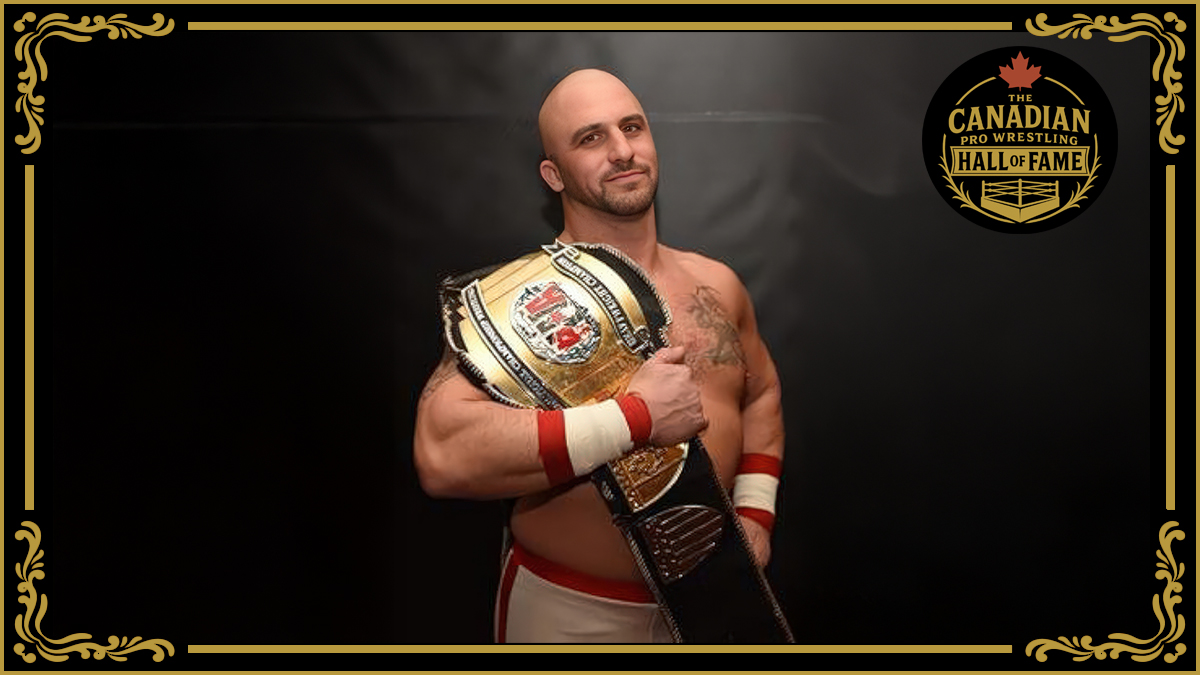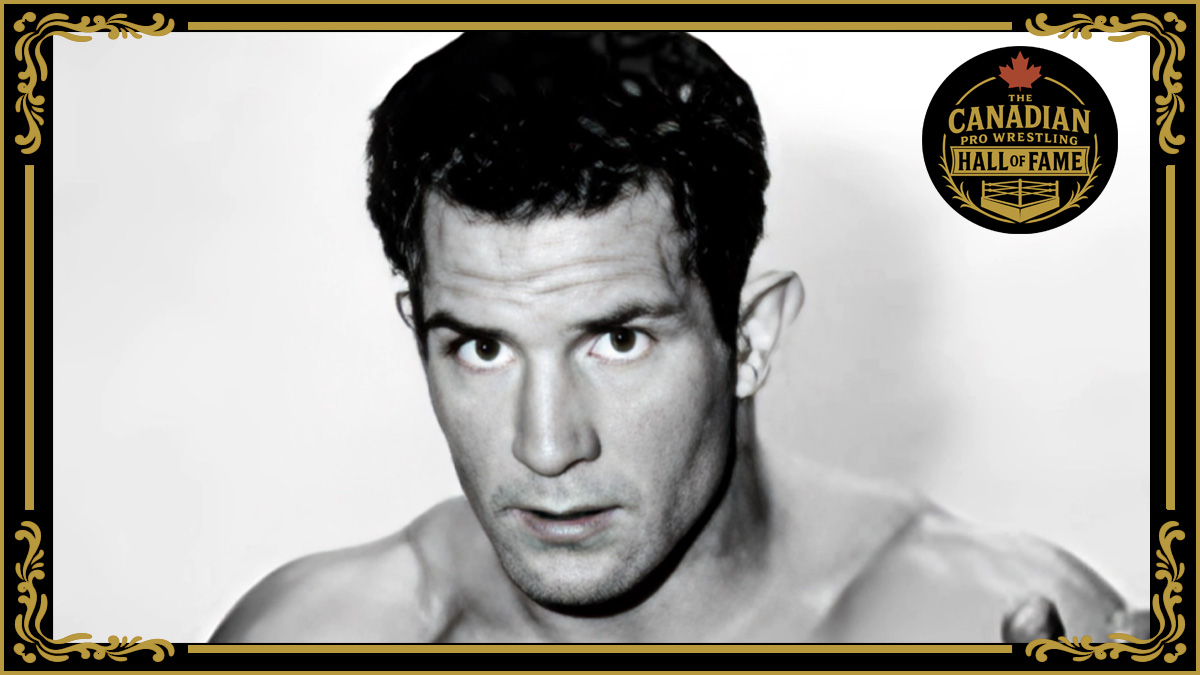MONTREAL – On any given weekend in this country, the dreamers of professional wrestling will cram themselves into a vehicle and head off to a show. Traveling is a way of life for wrestlers, clocking untold hours traversing highways & roads through all kinds of weather.
When Ontario-based grappler Ruffy Silverstein made his first road trip to becoming a professional wrestler, it would take the Toronto native to the so-called wrestling capital of the world, Calgary, Alberta. From there, a five-plus-year odyssey would ensue, which at times would test his passion for the business.
“The wrestling business has brought me coast to coast. I’ve wrestled in just about every province,” said Silverstein in an interview SLAM! Wrestling, at the recent Championship Wrestling Association show in Montreal.
Later that week, the 5’10, 220 pound Silverstein would have the privilege of wrestling in a WWE RAW brand dark match at the Molson Centre, followed by a second bout with the Smackdown! show in Toronto at the Air Canada Center on Tuesday.
“Things are going really well and I can’t complain. Things are starting picking up now with the WWE. I’ve been trying to get in there for some time, now they’re starting to listen and I’m getting some opportunities.”
As Silverstein recalled, when he made his decision to become a pro, he needed only look back upon his TV viewing habits as a child to determine where he would go to learn the trade.
“WWE(F) was definitely my favorite to watch, and Stampede as well,” Silverstein said, also including Montreal based International Wrestling and the American Wrestling Association.
“But it was mainly Bret Hart, Owen Hart and the British Bulldogs that were my biggest influence. I looked around at some schools in Ontario, but I figured if you’re going to a school, you might as well go to the best. As far as I’m concerned the Harts are the best teachers,” he said.
In 1998, at the age of 25 with fiancée in tow, Silverstein journeyed west in pursuit of his dream.
When training ensued in Calgary, he was immediately indoctrinated into a grueling physical conditioning regime.
“I think what helped me get through the training was going to thrash metal concerts & surviving mosh pits when I was younger. My body would take a beating and my body would be sore for days,” Silverstein reflected.
“I got used to the same kind of pain in wrestling. Your using muscles that you’ve never used before. My neck is still stiff from day one of training, it just comes with the business. You learn your falls, your back bumps, your front bumps and your feeling sore in places you never knew existed. But you got to break through it or go home.”
Mirroring the experiences of fellow dungeon graduates Chris Jericho and Lance Storm, Silverstein saw many of his fellow students fail to complete the training. Aside from playing some select sports in high school, it all came down to passion for the Torontonian to endure.
“What got me through the training was the love of being a pro wrestler, it’s something I always wanted to do. Just being there, in the dungeon, was a thrill,” he said, extending praise to his lead instructor at that time, Bruce Hart.
“Bruce was an excellent coach. He would give you encouragement all the way through. He gave a lot of constructive criticism. If you weren’t doing it right, he would tell you and he would be blunt about it. If you didn’t body slam a guy right, you would do it until you got it right. He taught us that you were in a fight, stay on top of the guy.”
Eventually, Silverstein would have his brush with greatness, in the form of a grappling session with none other the patriarch of the Hart family, the late Stu Hart.
“I had the opportunity to get stretched by him, twice,” Silverstein recalled, with a slight facial wince.
“I never felt so helpless in my life. This man was in his eighties and he’d have my chin touching my chest, my arms above my head and he would say ‘Try to break the hold by gutting my eye!’ So I went for his eye and that’s a mistake, now he’s got me twisted up like a pretzel!”
As painful as the experience was for him, it is a badge of honor worn proudly, along with the simple pride of having socialized with a unique, Canadian icon.
“He could tell you stories from the old days and he could remember the exact date, whether if was snowing or raining. It was quite something to listen to him speak.”
With his training now completed, Silverstein set out to pay his dues with the Calgary Stampede promotion. When not wrestling, he was fortunate enough to find work in his trade as a welder.
But his tenure in western Canada would be short lived, as the promotion eventually closed down for business in 2000. The only thing left to do was pack up and head back on the road to Ontario. It would be sobering trip back home.
“I moved out there (Calgary) with a fully furnished apartment and a fiancée and I came back with nothing. Not even my car made it home,” Silverstein told.
On top of all that, Silverstein had sustained a severe ankle injury while wrestling in the west, requiring nine pins and a metal plate to repair. Despite all of this, he chose to carry on.
“I’ve sacrificed a lot for this business and I guess that’s what keeps me going. I’ve given up too much to just say I’ll give it all up.”
Upon his entry into the wrestling scene in his home province, he soon discovered a completely different ring style, further diversifying his overall wrestling abilities.
“It’s so different. The style out west is very old school; I didn’t do much high flying out west whatsoever. I come to Ontario and people don’t stay on the ground out here. There’s a lot more high flyers and that forces me to pick up the pace and do more top rope maneuvers.” (In fact, his in-ring name is the same as an old-school wrestler from the ’50s.)
Topping off his time in Ontario with tours of eastern Canada and various independents in the United States, Silverstein has come full circle as a well versed wrestler.
In time, he would utilize that unflinching grit of his to acquire the attention of the WWE. “It’s just persistence. It’s just like applying for a regular job, you send in your resume, portfolio, a video of your matches. You make sure they know you’re interested and finally establish a relationship. I like to think my foot is finally in the door, now I just have to get invited in.”




